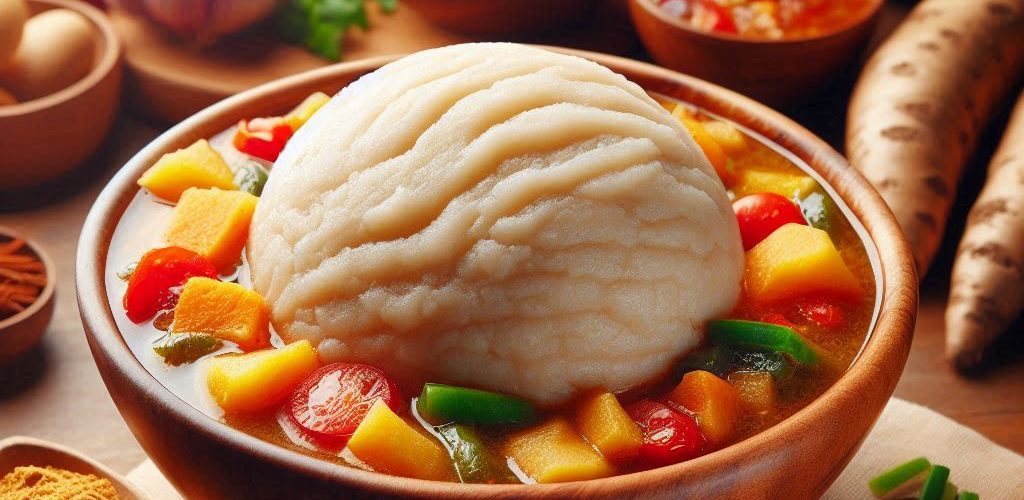In the rich tapestry of Ghanaian cuisine, few dishes symbolize cultural heritage as profoundly as fufu. This staple food, made primarily from yams, exudes a unique charm that enchants locals and visitors alike. Known for its distinctive texture and versatility, fufu serves as a testament to the country’s culinary ingenuity and its deep-rooted traditions.
What is Fufu?
Ghanaian fufu consists of starchy foods like yams that are boiled until soft and then pounded into a smooth, sticky dough. The process of making fufu is an art form that requires skill and practice. Traditionally, the yams are peeled and boiled until tender, usually for about 30-45 minutes, depending on their size. Once cooked, the yams are transferred to a mortar and pounded using a pestle until they achieve a silky, elastic consistency. This labor-intensive method imbues the fufu with a depth of flavor that is truly unparalleled.
Some variations of fufu also include other starchy ingredients such as cassava or plantains, allowing for a range of textures and tastes based on regional preferences. However, the classic yam fufu remains the most iconic version, revered for its ability to pair beautifully with a variety of soups and stews.
Pairing Fufu with Traditional Dishes
One of the most delightful aspects of fufu is its compatibility with various Ghanaian soups and sauces. Its smooth, sticky texture acts as the perfect accompaniment to rich, flavorful dishes. Common pairings include light soup, peanut soup, and groundnut soup. Each combination vibrantly showcases the diversity of Ghanaian flavors, inviting diners to savor every bite.
For many Ghanaian families, the meal is incomplete without fufu, as it embodies the values of togetherness and community. Sharing a bowl of soup and fufu is a communal experience, one that fosters bonds and creates lasting memories among family and friends.
The Cultural Significance of Fufu
Beyond its culinary appeal, fufu holds great cultural significance within Ghanaian society. It is often consumed during celebrations, rituals, and family gatherings, serving as a symbol of unity and conviviality. The act of pounding yams is not just about food preparation; it is also a time for families to come together, share stories, and pass down traditions.
Furthermore, fufu is embedded in the identity of many Ghanaians. Its preparation and consumption often evoke nostalgia, reminding individuals of their roots and the rich cultural heritage they belong to. Whether enjoyed at home, in restaurants, or during special events, fufu remains a cherished dish that connects generations.
Making Fufu at Home
For those looking to recreate this traditional dish in their own kitchens, making fufu is a fulfilling endeavor. Start with fresh yams, which can usually be found in local markets or specialty grocery stores. After boiling and peeling, you can use a traditional mortar and pestle or a food processor to achieve the desired consistency. The key is to be patient and maintain a smooth texture, as this is essential for the authentic experience.
In conclusion, Ghanaian fufu is more than just a meal; it is a cultural emblem that encapsulates the spirit of togetherness and tradition. With its smooth, sticky texture and ability to complement a variety of savory dishes, fufu has earned its place at the heart of Ghanaian cuisine. Whether you are a seasoned culinary explorer or a curious food enthusiast, experiencing fufu is an adventure into the vibrant world of Ghana’s rich gastronomic heritage.




Add comment